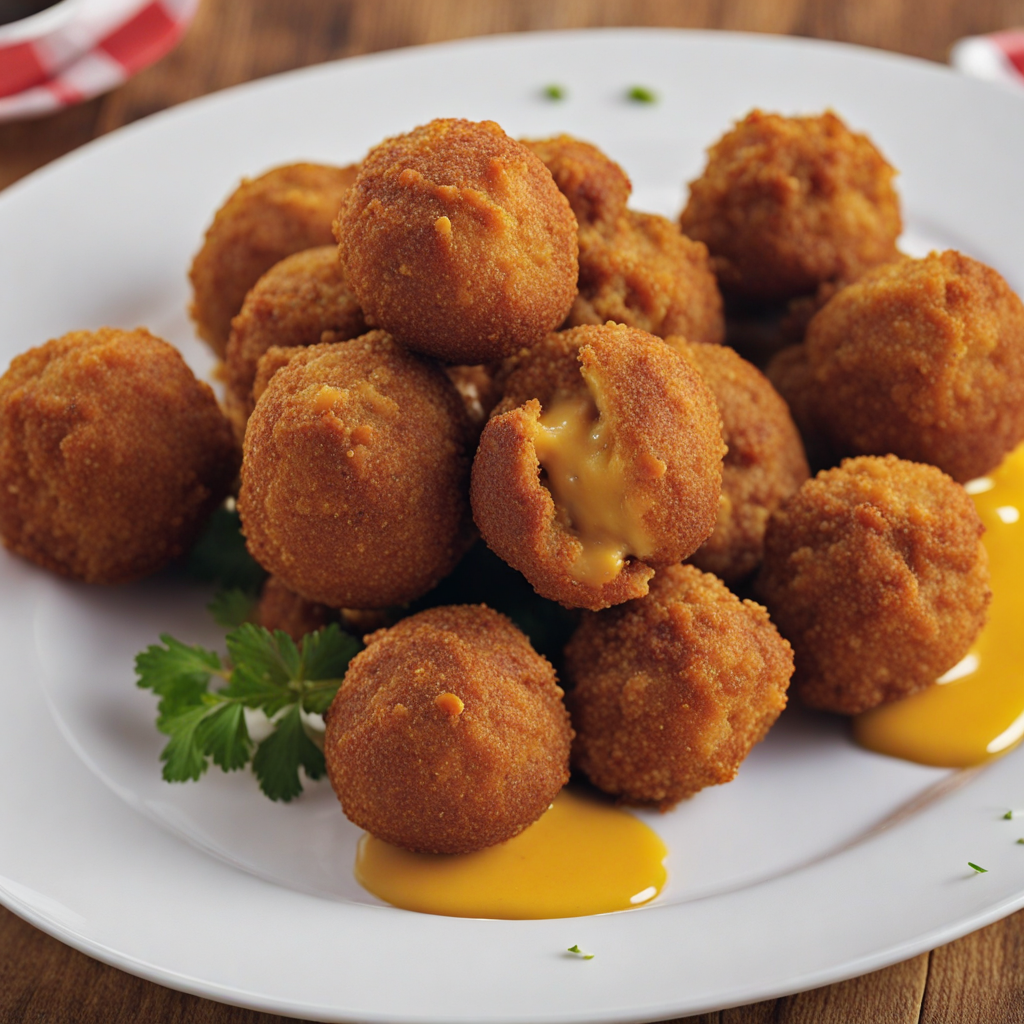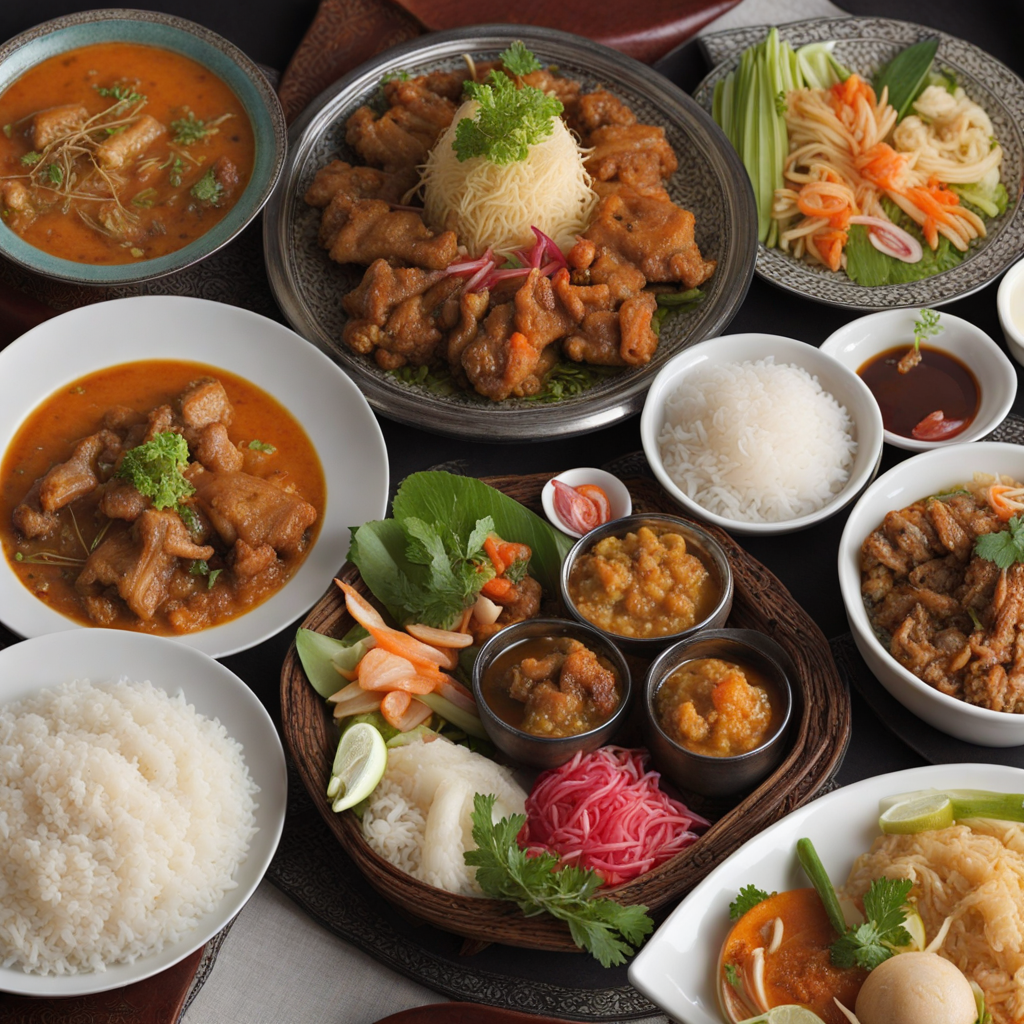Bitterballen
Bitterballen are a beloved Dutch snack that embodies the heart of Netherlands' culinary tradition. These savory, deep-fried balls are traditionally filled with a rich, flavorful mixture of meat ragout, often made from beef or veal, which is cooked down to create a tender and creamy filling. The meat is combined with a velvety béchamel sauce, seasoned with herbs, spices, and sometimes a hint of mustard, resulting in a delightful explosion of flavor with every bite. The outer layer is coated in breadcrumbs, giving them a crispy texture that contrasts beautifully with the smooth interior, making them an irresistible treat for any palate.
Bitterballen are typically served as a snack or appetizer, often accompanied by a side of tangy mustard for dipping. Their popularity extends beyond home kitchens to cafes and bars, where they are commonly enjoyed with a cold beer. The experience of biting into a hot, crunchy ball and savoring the rich, meaty filling is a quintessential Dutch experience, often shared among friends during social gatherings or at sporting events. The communal nature of enjoying Bitterballen adds to their charm, as they invite conversation and laughter.
How It Became This Dish
The History of Bitterballen: A Dutch Culinary Delight #### Origin and Early Beginnings Bitterballen, a beloved Dutch snack, is a deep-fried ball filled with a savory mixture of beef or veal ragout, often enjoyed with mustard for dipping. The origins of bitterballen can be traced back to the 19th century in the Netherlands, a time when the country was experiencing significant social and culinary shifts. The dish is believed to have evolved from the classic French croquette, which was introduced to the Dutch palate during a period of increased French influence in the region. The name "bitterballen" derives from "bitter," referring to the bitter beers that were commonly served alongside these savory snacks in Dutch bars and taverns. The practice of pairing snacks with drinks is a long-standing tradition in Dutch culture, and bitterballen quickly became a staple of the Dutch "borrel" (a casual drink with friends or colleagues), further solidifying their place in the culinary landscape. #### Cultural Significance Bitterballen holds a special place in Dutch society, often associated with convivial gatherings, celebrations, and social events. They are a ubiquitous feature at birthday parties, family gatherings, and sporting events, embodying the spirit of Dutch hospitality. In the Netherlands, the act of sharing food is deeply ingrained in the culture, and bitterballen is a quintessential example of this communal experience. The snack is not just a food item; it represents a moment of pause, a chance to connect with others while enjoying a drink. The Dutch have a fondness for their local beers, and bitterballen serves as the perfect accompaniment, enhancing the flavors of the beverage while providing a satisfying, crunchy texture that contrasts beautifully with the rich filling. The ritual of enjoying bitterballen over drinks is emblematic of the Dutch approach to leisure and socialization, where food serves as a bridge between individuals, fostering conversation and camaraderie. #### Development Over Time As the years progressed, bitterballen underwent significant development, both in terms of ingredients and preparation methods. The original recipes have been adapted over time, with various fillings emerging beyond the classic beef or veal ragout. Modern iterations may include chicken, seafood, or even vegetarian options, reflecting the evolving tastes and dietary preferences of contemporary society. The process of making bitterballen typically involves slow-cooking meat in broth with spices, then shredding it and combining it with a thick béchamel sauce. This mixture is cooled, shaped into small balls, coated in breadcrumbs, and deep-fried until golden brown. While this traditional method remains popular, many restaurants and home cooks now experiment with flavor enhancements, such as adding herbs, spices, or even cheese to the filling to create unique variations that cater to diverse palates. The rise of globalization and the increasing interest in international cuisines have also played a role in the popularity of bitterballen outside the Netherlands. As Dutch expatriates and food enthusiasts travel the world, they have introduced this delightful snack to new audiences. Today, bitterballen can be found in Dutch-themed bars and restaurants in cities far from the Netherlands, allowing people to experience this culinary gem and appreciate its rich history. #### The Modern Era In recent years, bitterballen have experienced a renaissance, becoming a trendy item on menus not only in the Netherlands but also in various international culinary landscapes. Food festivals and pop-up events have showcased the dish, often accompanied by creative twists that elevate the traditional recipe. Chefs experiment with unique flavor profiles, incorporating ingredients like truffle oil, smoked salmon, or even vegan substitutes to cater to a broader audience. The rise of social media has also contributed to the renewed interest in bitterballen. Food bloggers and influencers share mouthwatering images of the dish, enticing followers to seek out authentic experiences or attempt to make their own at home. This digital age has sparked a culinary curiosity, encouraging people to explore and appreciate the rich gastronomic heritage of the Netherlands. Moreover, the growth of craft breweries has further solidified the connection between bitterballen and beer culture. Many breweries feature the snack on their menus, recognizing its role as a perfect partner for their artisanal brews. This collaboration between food and drink has enriched the dining experience, allowing patrons to indulge in the flavors of the Netherlands while enjoying a leisurely afternoon or evening out. #### Conclusion Bitterballen is more than just a snack; it is a culinary symbol of Dutch culture, embodying the values of togetherness, hospitality, and joie de vivre. Its origins in the 19th century, paired with its evolution over time, reflect the adaptability and resilience of Dutch cuisine. As the world continues to embrace diverse culinary traditions, bitterballen stands as a testament to the rich history and vibrant culture of the Netherlands. Whether enjoyed in a cozy pub in Amsterdam or at a festive gathering with friends, bitterballen remains a cherished dish that captures the essence of Dutch communal life. In a world that often feels increasingly disconnected, the simple act of sharing a plate of bitterballen can still bring people together, making it a timeless treasure in the realm of gastronomy. As it continues to evolve, one can only imagine the new flavors and forms this beloved snack will take, ensuring that bitterballen remains a staple in the hearts and stomachs of people for generations to come.
You may like
Discover local flavors from Netherlands







